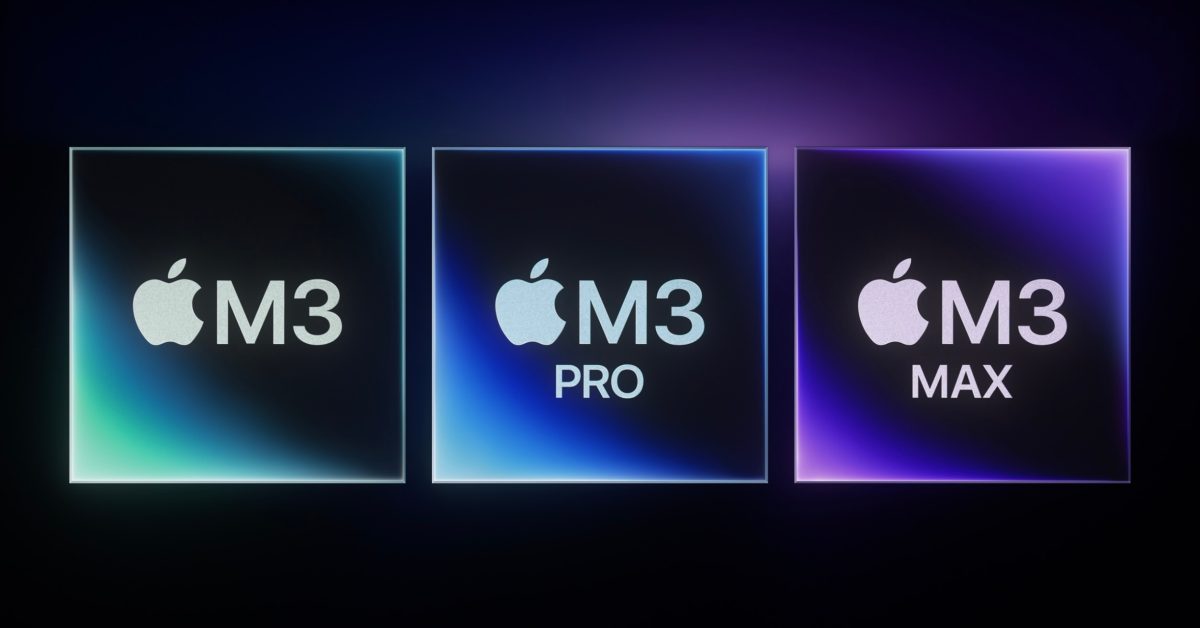- cross-posted to:
- technology@lemmy.ml
- cross-posted to:
- technology@lemmy.ml
I knew “scary fast” had to mean some sort of processor bump for hardware, but I was secretly hoping they’d kill off the remaining Lightning ports on their keyboards, trackpads, and mice.
And I was hoping they’d finally redesign that god awful mouse. I don’t know how people live with that thing.
I think they want to force trackpads. I can’t even use a mouse anymore. Feels strange.
Whe I use my Mac I only ever use the track pad, it’s amazing.
I’m a software developer and I’ll still only use the track pad when working at my desk with my monitors.
Still need a mouse for gaming though on the gaming PC.
You mean an external one right? Or are you using a laptop track pad all day with multiple monitors?
Using the laptops track pad and multiple monitors (2 external + macbook)
I find short of the mythical programmer who never uses a mouse because they they know 100% of the hotkeys, it let’s me keep my hands closer to the keyboard so I can move around and type quicker than going back and forth to the mouse.
The workflow is much less disruptive.
3 nanometer
That’s a silicon lattice just six atoms thick. What a time to be alive!
Nanometers have actually been a marker of generation for quite a while. 3nm is actually 24. https://en.m.wikipedia.org/wiki/3_nm_process
Intel does it and it’s annoying. 7mm lithography is actually 10nm. No idea how they get away with false advertising.
If they do 10nm++++ people also get angry.
Maybe use anything other than nm then?
That seems… Illegal. Much the same as selling a “foot long” Sub or Hotdog which is only 11".
At the very least it’s misleading.
What are you complaining about? We promised you three but you got 11! Those are bonus nanometers just for you.
Since feature size doesn’t actually matter, The metric that large scale computer consumers use is application performance. The feature size kind of is just a talking point, it’s not really fraud, since it doesn’t have a direct impact on the measurable performance that actually matters.
If I had a 20 nanometer chip that performs better than a 7 nanometer chip, I still have the better chip, and I know in large-scale procurement, you often get free sample chips to run your applications on, to see how performant the new architecture will actually be… And that’ll drive the bulk of the sales
It very much does matter. A large driver of pushing to smaller scale is to increase the amount of transistors and traces they can fit in a given space for reasons of both manufacturing and practical issues.
If they tried to make a modern CPU using the manufacturing scale of yesteryear, they’d have to use multiple wafers to make a single chip.
Can you imagine how big a modern CPU (7ish nm) design would end up if it were made using the same scale as even a Pentium Pro/Pentium 2 (300nm)?? They would be 42times larger!! Just try fitting one of those in a laptop. And that’s ignoring the timing issues you’d have with the traces being so long between sections of the CPU.
Wow, I had no clue. TIL
From Wikipedia: The term “3 nanometer” has no relation to any actual physical feature (such as gate length, metal pitch or gate pitch) of the transistors.
I built a M3 MBP just to see how much money a mxed out unit would be.
M3 14" MBP Max chip with all the cores 128GB RAM 8TB storage
$4700
That’s about the cost of my last MBP and iPhone pair, two times over. At that point, why even go for a laptop, vs. what would clearly be a high end desktop station?
*Wonders what a maxed out MBP costs.
*pics the 14”…
Maxed out 16” is $7,199.- (ex Apple care)
Maxed out 14” is $6,899.- … (I think you missed something)
Am I confused, or are you confidently asserting that desktop systems are objectively superior to laptops?
they are. (unless we’re talking about Mac only, which are not as repairable or upgradable)
desktop allow for a far better modularity, and reparability, far more ports, PCIe expansions like sound cards, etc.
If my screen breaks or I’d rather use a bigger one, I just buy a monitor and plug it in. If my CPU dies or is no more enough for my use case, I’ll just buy a better one while still using every other component. If I need more hard drives, I’ll just buy more SATA cables. If I need better sound, I’ll buy a sound card.
those features are dealbreakers. laptops will never be able to compete with a real desktop.
Desktops are superior even if only for the better cooling options, allowing your chips to sustain higher clockspeeds for longer without the machine sounding like a jet taking off
Aside from all of that, desktops are also far less constrained. If you have a CPU whose performance scales well with power (ie not an M2 but maybe an M3) you can slap it in a desktop and be able to give it 500 watts of power and a giant ass cooling setup to enable that performance. You can’t do this with the physical constraints required of a laptop.
Are you implying they’re not? The only reason anyone even buys laptops is because PCs aren’t portable. Otherwise PCs are the best.
The only reason people buy cars instead of tennis shoes is because cars are faster
I feel like a better version of this is to use bycicles and motorcycles. Even with that said fuck tennis shoes boots are where its at.
Not the OP but yes
In terms of performance that is.
At that point, why even go for a laptop, vs. what would clearly be a high end desktop station?
Because you can take that high-end computer with you across the room, on a plane, or anywhere else.
Yeah, that’s all true, but who really needs that kind of power?
For some people it’s worth it. For most people? Probably not.
IMHO the MacBook Airs and the M1/2 MBPs are looking pretty good right now.
Yeah, that’s all true, but who really needs that kind of power?
The people featured in the presentation: music and video production people, medical researchers, machine learning experts. The MacBook Air is their most popular notebook. The MacBook Pro is for people who actually need more (with a new lower-tier MacBook Pro added for morons who insist they need a “pro” model but really don’t).
Today I sat in a meeting I didn’t care much for and was able to run my project’s unittests. They take a long time to run, like an hour and a half if run on a single thread. But with an M2 Max I can run it all in ~10 minutes or so, and the power efficiency is such that I don’t have to worry about it. I previously had an XPS 15, and it both took longer and also I could kill it in an hour doing this, so any intensive tasks like this were only for when I had wall power.
It’s definitely not necessary for casual use, but there are definitely use cases that benefit from having a ton of power in a laptop.
Skip apple entirely. The spec out and testing of the new Qualcomm ARM chip releasing in laptops next year looks to have the m3 beat across the board and will definitely end up at a lower price point.
That’s what I’m waiting for, just that it gets close to Mx performance and has proper Linux support.
Did these chips have a translation in hardware like Rosetta? Or emulation that’s almost just as good? Edit: Found a couple things according to Qualcomm’s charts it looks interesting https://www.anandtech.com/show/21112/qualcomm-snapdragon-x-elite-performance-preview-a-first-look-at-whats-to-come But from what was observed along with other scores it looks a lot closer https://www.androidauthority.com/snapdragon-x-elite-benchmarks-3380426/
Yes! By all means, buy next years’ mythical chip and instead of this proven one!
Just for fun, let me buy every upsell, regardless of whether I want or need it.
And then let me compare that to the normal configuration of things I bought…
Why don’t you compare apples to apples. Configure an M3 MBP like you would with fairly normal specs?
apples to apples
Well, technically all those computers are Apples, so they’re within their rights
Yeah I was trying to make a lame pun
The memory maximums are a tad silly. I’d expect …
- M3 up to 32gb
- M3 Pro up to 64gb
- M3 Max ok, this one is ok
The ray tracing is awesome, but minus that I am not eager to move up from my M1 Max.
The memory maximums are going to be more and more important when it comes to local AI applications.
Take language models for an example
To run a 30b model, you need 24gb of video ram to do it fully on the video card. That’s a nvidia 3090 or 4090 today. But in the grand scheme of things, 30b is small. They are going to get much bigger, especially when you want larger contexts which allow the AI to remember more about its interactions with you.
Apples memory is unified, so it can be system ram, or video ram. You’ll be able to easily load a 70b model into a MacBook with 64gb of ram for example, where you’d need 2 3090s or 4090s and a hefty PSU on a current Gen non Mac PC (if you even can with just that)
For the moment, things are better optimized for windows and nvidia hardware, but Apple is encroaching on this space, and their huge amounts of video memory will begin to unlock using and training larger and larger models with each hardware generation.
Expect to see nvidia starting to offer higher video ram cards as well for this exact reason. Maybe even cards tailored to that instead of gaming with really high amounts of ram.
Doesn’t the m2 max allow 196gb of ram? Seems like an odd downgrade. The value in these for me is the unified memory for large ai models, but most consumers may not notice that. Who knows.
That’s the m2 ultra which is only the desktop version right now.
M2 release dates.
- M2: June 24, 2022
- M2 Pro and Max: January 17, 2023
- M2 Ultra: June 13, 2023
Damn Apple.
I would expect those machines should have launched earlier than they did: everything was pushed back as a result of supply chain issues.
I am making assumptions here but I’ve heard similar speculation from several places.
What is “dynamic caching”? The article mentions that iris new, but nothing more.
Based on my 60 seconds reading on it, onboard GPUs typically share the systems RAM. It is usually a fixed amount from my understanding. Dynamic caching seems to allow the GPU to only consume what it needs. Without knowing more, I’m guessing this means it frees up more RAM for the system instead of holding a fixed chunk in reserve for the GPU, or, on the other side, allows the GPU to use more RAM than some predetermined fixed amount.
According to Apple’s press release, the GPUs in the new Macs are already faster and more efficient than those that came before them. But they go further thanks to their support for Dynamic Caching, a feature that “unlike traditional GPUs, allocates the use of local memory in hardware in real time.”
What does that mean? Apple says that “with Dynamic Caching, only the exact amount of memory needed is used for each task. This is an industry first, transparent to developers, and the cornerstone of the new GPU architecture.”
Do we have a m3 air now? I can’t find it. I was planning to buy m2 air but now we have m3 so probably best to wait ?
Not yet, it’s just the MacBook Pro and iMac for now
I was kinda bored for this announcement. I have a M2 Pro MBP for work and I really have no desire to get anything faster.
I was hoping for a new iPad Mini announcement
I’m hoping for a new iPhone mini announcement…
I’m hoping for an Apple Watch mini announcement*
*-not really, I just wanted to feel like I was a part of something for a moment there…
I’m am too wanting to be a part of this… So… Mini mac studio would be nice
So… a Mac mini…? 😀
pity qualcomm has just wiped the floor with them. even with the new M3 it’s not even close I believe. please correct me if I’m wrong (who am I kidding you’re gunna correct me)
deleted by creator

















